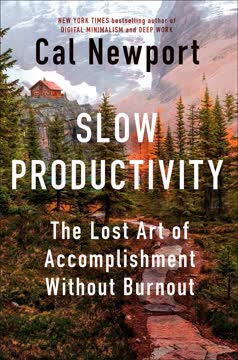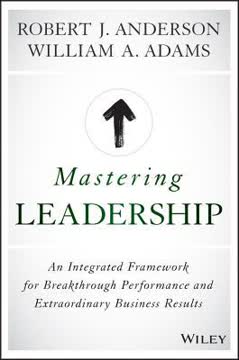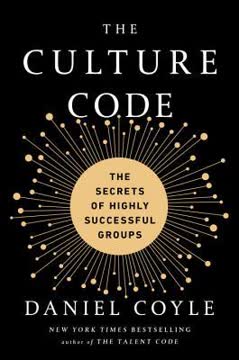Key Takeaways
1. The Subscription Economy Shifts Power to Customers
The subscription economy puts the customer in charge much more than was previously true.
Paradigm shift. The rise of subscription-based business models has fundamentally altered the balance of power between companies and customers. In the traditional "perpetual license" model, customers made large upfront investments, often becoming locked into a vendor's ecosystem. The subscription model, however, allows customers to pay smaller amounts over time and switch providers more easily.
Customer-centric focus. This shift necessitates a new approach:
- Continuous value delivery to retain customers
- Emphasis on long-term customer relationships over one-time sales
- Increased transparency and responsiveness to customer needs
- Greater focus on customer satisfaction and success metrics
Implications for businesses. Companies must adapt by:
- Developing products and services that consistently meet evolving customer needs
- Creating seamless onboarding and adoption processes
- Implementing robust customer success programs
- Leveraging data and technology to understand and predict customer behavior
2. Customer Success is Vital for Recurring Revenue Businesses
Customer success is designed to create attitudinal loyalty.
Beyond customer support. Customer success is a proactive, strategic approach focused on ensuring customers achieve their desired outcomes using a company's products or services. Unlike traditional customer support, which is reactive, customer success aims to prevent issues and drive value realization.
Key components of customer success:
- Proactive engagement throughout the customer lifecycle
- Deep understanding of customer goals and challenges
- Metrics-driven approach to measuring and improving customer outcomes
- Cross-functional collaboration within the organization
- Continuous feedback loop for product and service improvements
Business impact. Effective customer success programs lead to:
- Higher customer retention rates
- Increased upsell and cross-sell opportunities
- Improved customer lifetime value (LTV)
- Enhanced brand reputation and customer advocacy
- Reduced customer acquisition costs through referrals and word-of-mouth
3. Segmentation and Tailored Approaches Drive Customer Success
Just-in-time is a phrase I've stolen here from the world of manufacturing.
Customized strategies. Not all customers are created equal, and a one-size-fits-all approach to customer success is ineffective. Companies must segment their customer base and develop tailored success strategies for each segment.
Three common engagement models:
- High-touch: Dedicated resources for strategic, high-value accounts
- Low-touch: Scalable, technology-enabled support for mid-tier customers
- Tech-touch: Automated, self-service solutions for high-volume, lower-value segments
Just-in-time customer success. This approach involves:
- Delivering the right level of support at the right time
- Using data and analytics to predict customer needs
- Balancing proactive outreach with efficient resource allocation
- Leveraging technology to automate routine tasks and communications
4. Product is the Ultimate Scalable Differentiator
If you've got a product that becomes essential to the way people are doing business and it's easy to use, your customers will be happy and loyal; they'll get the value.
Product-led growth. In the subscription economy, the product itself becomes the primary driver of customer acquisition, retention, and expansion. A well-designed, user-friendly product that delivers clear value is the most scalable way to ensure customer success.
Key product considerations:
- Intuitive user experience and interface
- Built-in onboarding and guidance features
- Regular updates and improvements based on customer feedback
- Integration capabilities with other tools in the customer's ecosystem
- Robust analytics and reporting features
Beyond features. To truly differentiate:
- Focus on solving core customer problems
- Invest in ongoing product education and enablement
- Create a product-centric community for users
- Develop a clear product roadmap aligned with customer needs
- Continuously gather and act on customer feedback
5. Relentlessly Monitor and Manage Customer Health
Customer health is at the heart of customer success.
Proactive approach. Monitoring customer health allows companies to identify potential issues before they escalate, leading to higher retention rates and increased customer satisfaction.
Key components of customer health:
- Product usage and adoption metrics
- Customer support interactions
- Financial indicators (e.g., timely payments)
- Engagement with company resources (e.g., training, webinars)
- Net Promoter Score (NPS) or other satisfaction metrics
Actionable insights. Effective health monitoring enables:
- Early identification of at-risk accounts
- Targeted interventions to address specific issues
- Data-driven decisions on resource allocation
- Continuous improvement of customer success strategies
- Predictive modeling for customer behavior and outcomes
6. Obsessively Improve Time-to-Value for Customers
If it's worth doing, it's worth doing really well.
Critical success factor. Reducing the time it takes for customers to realize value from a product or service is crucial for building loyalty and reducing churn. This is especially important in subscription-based businesses where customers can easily switch providers.
Strategies to improve time-to-value:
- Streamlined onboarding processes
- Clear, achievable milestones for customer success
- Personalized training and enablement resources
- Regular check-ins and progress assessments
- Quick wins and early value realization opportunities
Continuous optimization. Companies should:
- Regularly measure and analyze time-to-value metrics
- Identify and remove bottlenecks in the customer journey
- Leverage technology to automate and accelerate value delivery
- Align internal teams around time-to-value goals
- Celebrate and learn from successful customer outcomes
7. Drive Customer Success Through Hard Metrics
You get what you measure!
Data-driven approach. Establishing clear, quantifiable metrics for customer success allows companies to objectively assess performance, identify areas for improvement, and demonstrate the value of customer success initiatives.
Key customer success metrics:
- Customer retention rate
- Net revenue retention
- Customer lifetime value (CLV)
- Product adoption and usage rates
- Customer health score
- Net Promoter Score (NPS)
- Time-to-value
Actionable insights. Effective use of metrics enables:
- Data-driven decision making
- Improved resource allocation
- Early identification of trends and issues
- Alignment of customer success goals with business objectives
- Demonstration of ROI for customer success investments
8. Customer Success Requires Top-Down, Company-Wide Commitment
Customer success is not just a department or an organization. It's a philosophy that must pervade your entire company.
Cultural shift. True customer success requires a fundamental change in how organizations operate, moving from a product-centric to a customer-centric approach.
Key elements of a customer success culture:
- Executive sponsorship and visible leadership commitment
- Cross-functional collaboration and shared goals
- Customer-centric metrics and incentives
- Ongoing employee training and development
- Transparent communication of customer feedback and insights
Organizational impact. Embracing customer success affects:
- Product development priorities
- Sales and marketing strategies
- Customer support and service delivery
- Finance and operations decision-making
- Hiring and talent development practices
9. The Rise of the Chief Customer Officer (CCO)
Customer success has become a vortex sucking parts of other organizations into it as well.
Strategic role. The Chief Customer Officer (CCO) is an emerging executive position responsible for overseeing the entire customer experience and driving customer-centric strategies across the organization.
CCO responsibilities:
- Developing and implementing customer success strategies
- Aligning cross-functional teams around customer outcomes
- Overseeing customer-facing teams (e.g., support, success, services)
- Driving customer retention and expansion initiatives
- Representing the voice of the customer in executive decisions
Organizational impact. The rise of the CCO reflects:
- Increased focus on customer lifetime value
- Recognition of customer success as a key business driver
- Need for unified leadership of customer-facing functions
- Importance of customer insights in strategic decision-making
- Shift towards customer-centric business models
10. Technology Enables Effective Customer Success Management
Customer success, whether done in a high-touch way or a tech-touch way, is all about data.
Data-driven approach. Customer success management technology allows companies to aggregate, analyze, and act on customer data at scale, enabling more effective and efficient customer success strategies.
Key capabilities of customer success platforms:
- Customer health scoring and monitoring
- Predictive analytics for churn risk and upsell opportunities
- Automated customer communication and engagement
- Task management and workflow automation
- Integration with other business systems (e.g., CRM, support tickets)
Business impact. Effective use of technology enables:
- Proactive identification and resolution of customer issues
- Scalable customer success processes across segments
- Data-driven decision making and resource allocation
- Improved collaboration between customer-facing teams
- Demonstrable ROI on customer success investments
Last updated:
FAQ
What's Customer Success: How Innovative Companies Are Reducing Churn and Growing Recurring Revenue about?
- Focus on Retention: The book by Nick Mehta emphasizes the importance of retaining customers in subscription-based business models, particularly in the SaaS industry.
- Historical Context: It explores the evolution of customer success, especially with the shift to subscription models, and how this has transformed customer relationships.
- Practical Framework: Provides a framework for implementing customer success strategies, highlighting roles like customer success managers and the need for cross-functional collaboration.
Why should I read Customer Success by Nick Mehta?
- Industry Relevance: Essential for those in SaaS or subscription-based businesses, addressing the critical need for customer retention and satisfaction.
- Actionable Insights: Offers practical advice on implementing strategies that can lead to increased revenue and reduced churn.
- Expert Contributions: Features insights from industry leaders, making it a comprehensive guide for enhancing customer success initiatives.
What are the key takeaways of Customer Success?
- Customer-Centric Philosophy: Emphasizes a customer-first approach as crucial for long-term business success, prioritizing customer needs.
- Ten Laws of Customer Success: Introduces ten laws guiding organizations in building effective strategies, such as "Sell to the Right Customer."
- Cross-Functional Impact: Highlights the importance of collaboration across departments to create a unified approach to customer satisfaction.
What are the Ten Laws of Customer Success mentioned in Customer Success?
- Sell to the Right Customer: Target customers who align with your product to reduce churn and increase satisfaction.
- Monitor Customer Health: Relentlessly track customer health scores and engagement metrics to identify at-risk customers.
- Company-Wide Commitment: Emphasizes that customer success must be embraced at all levels, starting from leadership.
How does Customer Success define customer success?
- Driving Customer Value: Defined as the organization or philosophy designed to ensure customers achieve their desired outcomes using the product.
- Focus on Retention and Growth: Successful customers renew contracts and buy more products, making customer success vital in a recurring revenue model.
- Proactive Engagement: Involves proactive engagement to ensure customers derive value and address issues before they lead to churn.
How does Customer Success define churn and its impact?
- Churn Definition: The percentage of subscribers who discontinue their subscription within a given time period, affecting revenue.
- Impact on Revenue: High churn rates can severely impact a company's revenue and growth potential, as losing customers means losing future revenue streams.
- Need for Management: Managing churn is essential for business viability, requiring strategies to monitor and improve customer health.
What role does technology play in customer success according to Customer Success?
- Automation of Processes: Technology can automate customer success processes, such as monitoring customer health and sending communications.
- Data-Driven Insights: Leverages technology to gather and analyze customer data, informing strategies for engagement and reducing churn.
- Customer Engagement Tools: Tools and platforms facilitate customer interactions, enhancing the overall customer experience.
How can organizations implement customer success strategies as per Customer Success?
- Establish a Customer Success Team: Create dedicated teams responsible for managing customer relationships and ensuring desired outcomes.
- Utilize Data and Analytics: Use data to monitor customer health and engagement, allowing proactive issue resolution and upselling opportunities.
- Foster Cross-Department Collaboration: Requires collaboration between sales, marketing, product, and customer success teams for unified customer satisfaction.
What are some best practices for implementing customer success strategies from Customer Success?
- Define Success Metrics: Establish clear metrics that align with customer goals and business objectives to measure progress.
- Segment Your Customers: Differentiate customers based on needs and potential value, tailoring engagement strategies accordingly.
- Create a Feedback Loop: Regularly solicit feedback to guide product improvements and enhance the customer experience.
How can I measure customer health effectively according to Customer Success?
- Use Health Scores: Develop a customer health score incorporating metrics like product usage and support interactions.
- Track Engagement Metrics: Monitor interactions such as logins and feature usage to gain insights into satisfaction and churn risks.
- Regular Check-Ins: Schedule periodic check-ins to discuss experiences and gather feedback, addressing issues proactively.
What are some common challenges in customer success as discussed in Customer Success?
- Resource Allocation: Balancing personalized support with limited resources, optimizing engagement strategies based on customer segments.
- Data Silos: Overcoming the challenge of spread-out customer information by integrating data sources for a comprehensive view.
- Changing Customer Expectations: Adapting strategies to meet evolving demands as customers become more empowered.
What are the best quotes from Customer Success and what do they mean?
- "Customer success is not a one-size-fits-all proposition.": Highlights the need for tailored approaches to meet unique customer needs.
- "You can't pour enough business into the top of the funnel to sustain real growth if customers are leaking out the bottom at a high rate.": Emphasizes the critical nature of customer retention.
- "Customer success is a company-wide commitment.": Underscores the necessity for all departments to align around customer outcomes for better results.
Review Summary
Customer Success receives mixed reviews, with an average rating of 4 out of 5. Readers appreciate its comprehensive overview of customer success principles and practical insights for implementing CS strategies. Many find it valuable for understanding the importance of customer retention and growth in subscription-based businesses. However, some criticize the book for being repetitive, unfocused, and overly long. Despite these criticisms, it's generally considered a useful resource for those in customer success roles or looking to implement CS practices in their organizations.
Similar Books










Download PDF
Download EPUB
.epub digital book format is ideal for reading ebooks on phones, tablets, and e-readers.




